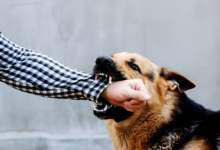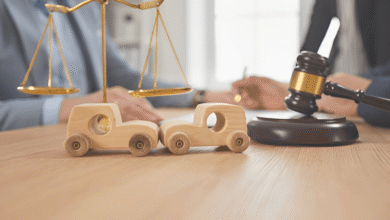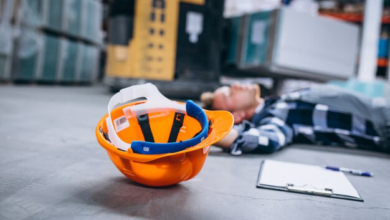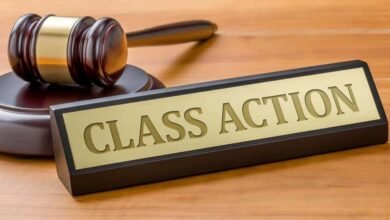
Slip and Fall Lawsuits in Texas: How to Prove Negligence
Slip and Fall Lawsuits in Texas :to prove negligence, secure compensation, and hold property owners accountable for hazardous conditions.
Slip and fall lawsuits in Texas are a common type of personal injury claim that arise when an individual is injured due to hazardous conditions on someone else’s property. Proving negligence in these cases is crucial to securing compensation for medical expenses, lost wages, and pain and suffering. Property owners in Texas have a legal duty to maintain safe premises for visitors, and failure to do so can result in liability. However, establishing negligence requires a thorough understanding of Texas premises liability laws, gathering evidence, and demonstrating that the property owner’s actions or inactions directly caused the injury. This article will explore the key elements of slip and fall lawsuits in Texas, how to prove negligence, and the steps victims can take to build a strong case.
Understanding Slip and Fall Lawsuits in Texas
Slip and fall accidents occur when a person trips, slips, or falls due to dangerous conditions on another person’s property. These conditions can include wet floors, uneven surfaces, poorly lit areas, or debris left in walkways. In Texas, slip and fall cases fall under the broader category of premises liability law, which holds property owners accountable for injuries caused by unsafe conditions on their property.
To succeed in a slip and fall lawsuit, the injured party (plaintiff) must prove that the property owner (defendant) was negligent. Negligence, in this context, means that the property owner failed to take reasonable steps to ensure the safety of visitors. This could involve failing to clean up spills, repair broken stairs, or provide adequate warning of potential hazards.
Key Elements of Proving Negligence in Texas
Proving negligence in a slip and fall case requires establishing four key elements: duty of care, breach of duty, causation, and damages.
Duty of Care: The first step is to show that the property owner owed a duty of care to the injured party. In Texas, the duty of care depends on the legal status of the visitor. There are three categories of visitors under Texas law: invitees, licensees, and trespassers. Invitees, such as customers in a store, are owed the highest duty of care, while trespassers are owed the least. Property owners must ensure that their premises are reasonably safe for invitees and warn them of any known hazards.
Breach of Duty: The plaintiff must demonstrate that the property owner breached their duty of care. This means showing that the owner knew or should have known about the hazardous condition and failed to address it. For example, if a store owner was aware of a leaking roof but did not place warning signs or repair the leak, this could constitute a breach of duty.
Causation: The plaintiff must prove that the property owner’s breach of duty directly caused the injury. This requires establishing a clear link between the hazardous condition and the slip and fall accident. For instance, if a customer slips on a wet floor in a grocery store, they must show that the wet floor was the direct cause of their injury.
Damages: Finally, the plaintiff must demonstrate that they suffered actual damages as a result of the accident. This can include medical expenses, lost wages, pain and suffering, and other losses. Without proof of damages, the plaintiff cannot recover compensation.
Gathering Evidence to Prove Negligence
Building a strong slip and fall case requires gathering substantial evidence to support the claim of negligence. This evidence can include:
Photographs and Videos: Taking pictures or videos of the accident scene can help document the hazardous condition that caused the fall. This can include wet floors, uneven surfaces, or poorly lit areas.
Witness Statements: Eyewitnesses can provide valuable testimony about the conditions at the time of the accident and the property owner’s actions or inactions.
Incident Reports: If the accident occurred in a business, such as a store or restaurant, the plaintiff should request a copy of the incident report filed by the property owner or employees.
Medical Records: Medical records are essential for proving the extent of the injuries and the treatment required. They also establish a connection between the accident and the injuries sustained.
Maintenance Records: In some cases, obtaining maintenance records can show that the property owner was aware of the hazardous condition but failed to address it.
Common Defenses in Slip and Fall Cases
Property owners and their insurance companies often use various defenses to avoid liability in slip and fall cases. Some common defenses include:
Comparative Negligence: Texas follows a modified comparative negligence rule, which means that if the plaintiff is found to be partially at fault for the accident, their compensation may be reduced. For example, if the plaintiff was texting while walking and failed to notice a wet floor, the court may assign a percentage of fault to them.
Open and Obvious Doctrine: Property owners may argue that the hazardous condition was open and obvious, and the plaintiff should have been aware of it. For instance, if a large puddle of water was clearly visible, the property owner may claim that the plaintiff should have avoided it.
Lack of Notice: Property owners may also argue that they did not have actual or constructive notice of the hazardous condition. This means they were unaware of the danger and had no reasonable opportunity to address it.
Steps to Take After a Slip and Fall Accident
If you are injured in a slip and fall accident, taking the following steps can help protect your rights and strengthen your case:
Seek Medical Attention: Your health should be your top priority. Seek medical attention immediately, even if your injuries seem minor. Some injuries, such as concussions or internal bleeding, may not be immediately apparent.
Report the Accident: Notify the property owner or manager of the accident and ensure that an incident report is filed.
Document the Scene: Take photographs or videos of the accident scene, including the hazardous condition that caused your fall.
Gather Witness Information: Obtain contact information from any witnesses who saw the accident.
Consult an Attorney: Slip and fall cases can be complex, and having an experienced personal injury attorney on your side can make a significant difference in the outcome of your case.
Read More: How Personal Injury Lawyers can Help in Workplace Slip and Fall Cases
Conclusion
Slip and fall lawsuits in Texas require a thorough understanding of premises liability law and the ability to prove negligence. By establishing the property owner’s duty of care, demonstrating a breach of that duty, and linking the breach to the injuries sustained, victims can build a strong case for compensation. Gathering evidence, such as photographs, witness statements, and medical records, is essential to supporting the claim. Additionally, being aware of common defenses and taking the right steps after an accident can help protect your rights and improve your chances of a successful outcome.
If you or a loved one has been injured in a slip and fall accident, it is important to seek legal advice as soon as possible. An experienced attorney can guide you through the legal process, help you gather evidence, and advocate for your right to fair compensation. Remember, proving negligence is key to holding property owners accountable and ensuring that victims receive the justice they deserve.
FAQs
What is the statute of limitations for slip and fall lawsuits in Texas?
In Texas, the statute of limitations for slip and fall lawsuits is two years from the date of the accident. Failing to file a claim within this timeframe can result in the loss of your right to compensation.
Can I still recover compensation if I was partially at fault for the accident?
Yes, Texas follows a modified comparative negligence rule, which allows you to recover compensation even if you were partially at fault, as long as your percentage of fault is 50% or less.
What types of damages can I recover in a slip and fall lawsuit?
You may be able to recover economic damages (medical expenses, lost wages) and non-economic damages (pain and suffering, emotional distress) depending on the circumstances of your case.
Do I need an attorney for a slip and fall case?
While it is possible to handle a slip and fall case on your own, having an experienced attorney can significantly improve your chances of success by helping you gather evidence, negotiate with insurance companies, and navigate the legal process.
How long does it take to resolve a slip and fall lawsuit?
The duration of a slip and fall lawsuit varies depending on the complexity of the case, the extent of the injuries, and whether the case goes to trial. Some cases settle within months, while others may take years to resolve.







